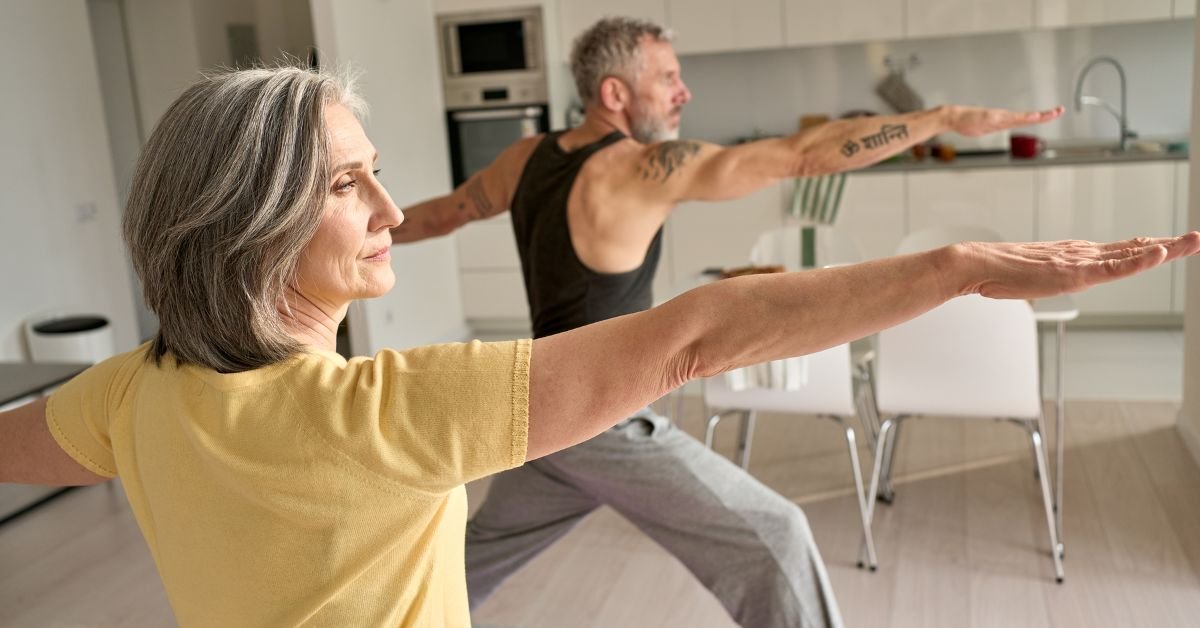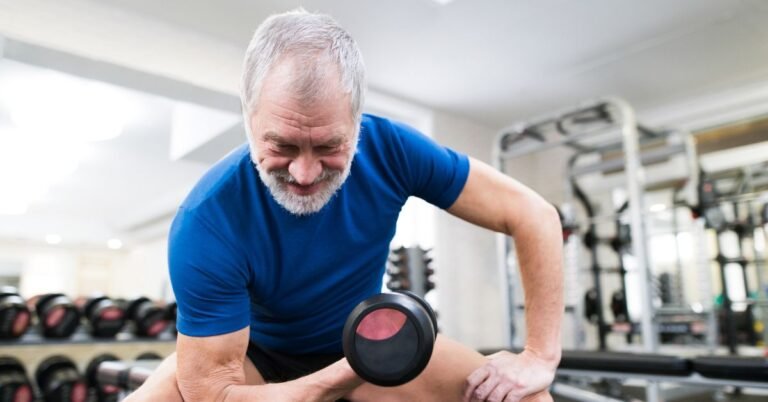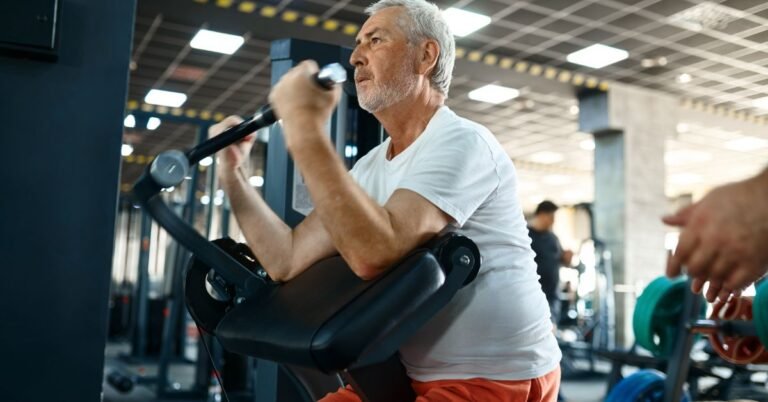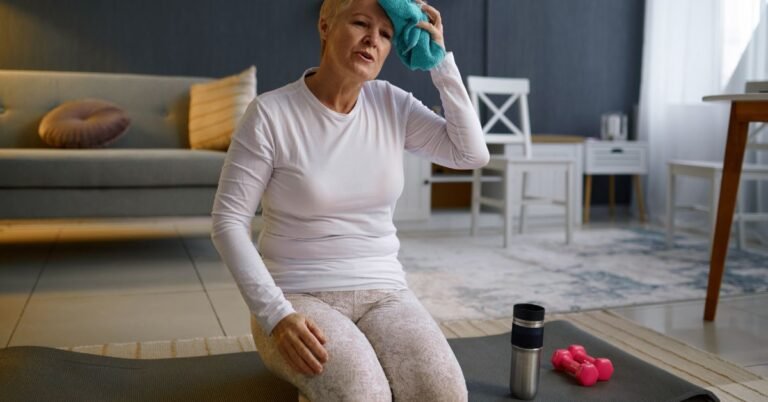Yoga and pilates are two forms of exercise that are growing in popularity, particularly among older adults. If you haven’t taken either of them up yet, perhaps this guide will convince you!
Both yoga and pilates provide a way to improve flexibility, strength, balance, postural awareness, mental health, breathing and quality of life in a non-impactful way. For many, there are social benefits to getting involved with these types of activities too.
Yoga and pilates are often taught in class environments, either in person or virtually. There are lots of free resources available online too which can help you get started.
Below, we explore the benefits of both yoga and pilates for older adults. We also look at the differences between the two, and how you can get started, even if it’s something you’ve never done before.
What we’ll cover:
The benefits of Yoga and Pilates for Older Adults
Flexibility and mobility
The various postures and exercises in yoga and pilates help to improve the range of motion of joints and length of muscles. It is common for joints to get stiff as we get older, partly due to age-related changes but also because we just don’t move our joints in all the vast ways they should move!
Strength
Yoga and pilates challenge our muscles to move and hold positions, often with our body weight as the resistance, or using small pieces of equipment. Different types of muscle contraction are used; isometric contractions are when our muscles are activated to hold a certain position, and eccentric contractions are when our muscles are asked to work whilst lengthening.
Both are commonly used in yoga and pilates, and are great ways of improving muscle mass and strength (which are known to decline with age). Strengthening our muscles and weight bearing exercises in Yoga and Pilates will also help bone density, which again declines with age and can lead to fractures.
Recommended Reading: A Beginner’s Guide to Strength Training For Older Adults
Balance
The postures and poses in yoga and pilates are excellent ways of challenging our balance. We know balance declines with age and there’s an increased risk of falls, as well of the consequences of these. To improve balance we must challenge it regularly.
Spending some time in a single leg stance or with a narrower base of support, are great ways of working on balance. Strengthening our antigravity muscles is also very important. Think calves, glutes and back muscles!
Recommended Reading: Balance Exercises For Seniors
Posture
Both yoga and pilates focus on trying to obtain an optimal posture in various positions, aiming for neutral alignment of the spine and pelvis. Although there is no ‘perfect’ posture, it is vital to be aware of our postures and that we have the ability to move in and out of a range of postures in order to keep a healthy spine.
For example as we get older, stiffening of certain joints and weakening of certain muscles can change our natural postures – you might find you start to stoop over a bit more around your upper back and shoulders. Having an awareness of this and the ability to change posture and positions regularly can help reduce any pain or problems associated with these changes as you age.
Mental health
It is well known that any exercise releases endorphins that improve our mood. Yoga and pilates have been shown to enhance mood, memory, concentration, self esteem, and reduce feelings of anxiety and depression.
Recommended Reading: The Effect of Resistance Training on Mental Health in Older Adults
Breathing
Yoga and Pilates teach a variety of breathing techniques, focusing on becoming aware of our breath and how to control it. This can help send calming signals to our nervous system, reducing feelings of stress and anxiety, improving our mood and lowering blood pressure.
Quality of life
With improved flexibility, muscle strength, balance, posture, mental health and breathing- who wouldn’t have an improved quality of life?
Is Yoga or Pilates Better?
It depends on your goals, physical condition, and personal preference.
As a general rule, yoga focuses a bit more on stretching, and Pilates a bit more on strength. However, they will each lead to improvements in both components and it really depends on your teacher, your personal preferences and your goals.
Some yoga styles, such as Hatha or chair yoga, are particularly suited to older adults because they offer slow, controlled movements with an emphasis on relaxation and mindfulness.
Pilates, on the other hand, can be especially helpful for those with back pain or osteoporosis because it strengthens deep stabilising muscles and promotes good alignment.
Which one should you choose?
- If your goal is to increase flexibility, balance, and relaxation, yoga may be the better option.
- If you want to improve core strength, posture, and stability, Pilates could be more beneficial.
- If you have specific health concerns (such as arthritis, osteoporosis, or back pain), speak to a qualified instructor or healthcare professional to determine the best approach for you.
We would recommend trying both, and choosing which one you personally prefer, or even continuing with both!
How Can I Get Started?
If you’re looking to get involved with yoga and pilates but aren’t sure where to start, we recommend either finding a local beginner’s class to join or finding resources online.
The NHS beginner yoga and pilates videos are a great place to start and can be done from your own home with an exercise mat.
Further Resources
Below is a list of systematic reviews investigating the impact of yoga and pilates in older adults if you are interested in reading more:
4) Yoga Effects on Brain Health: A Systematic Review of the Current Literature




